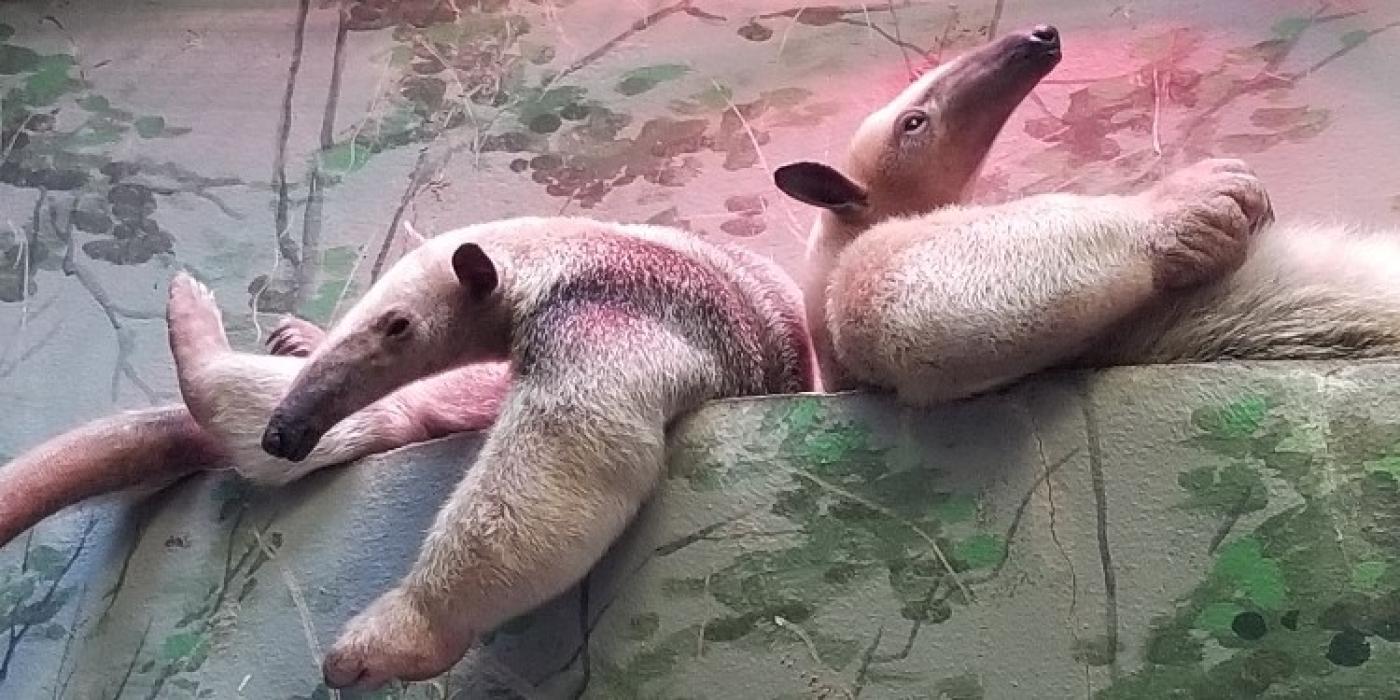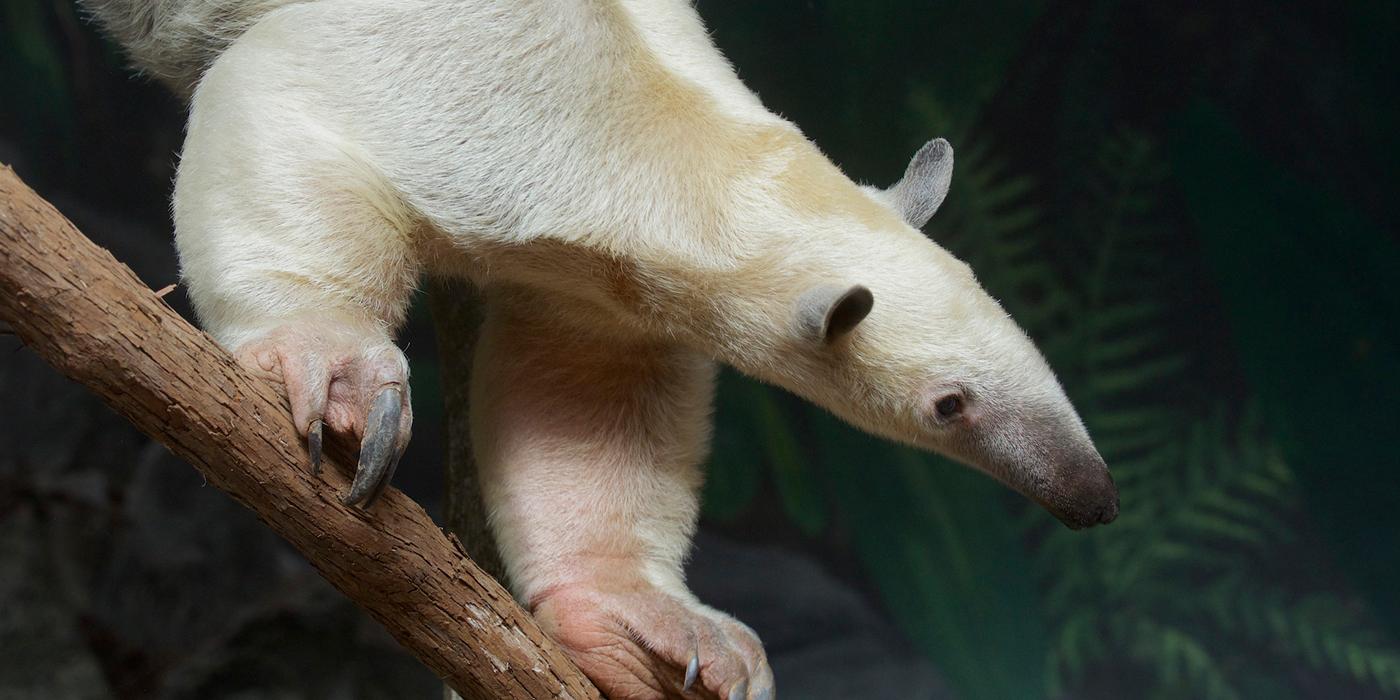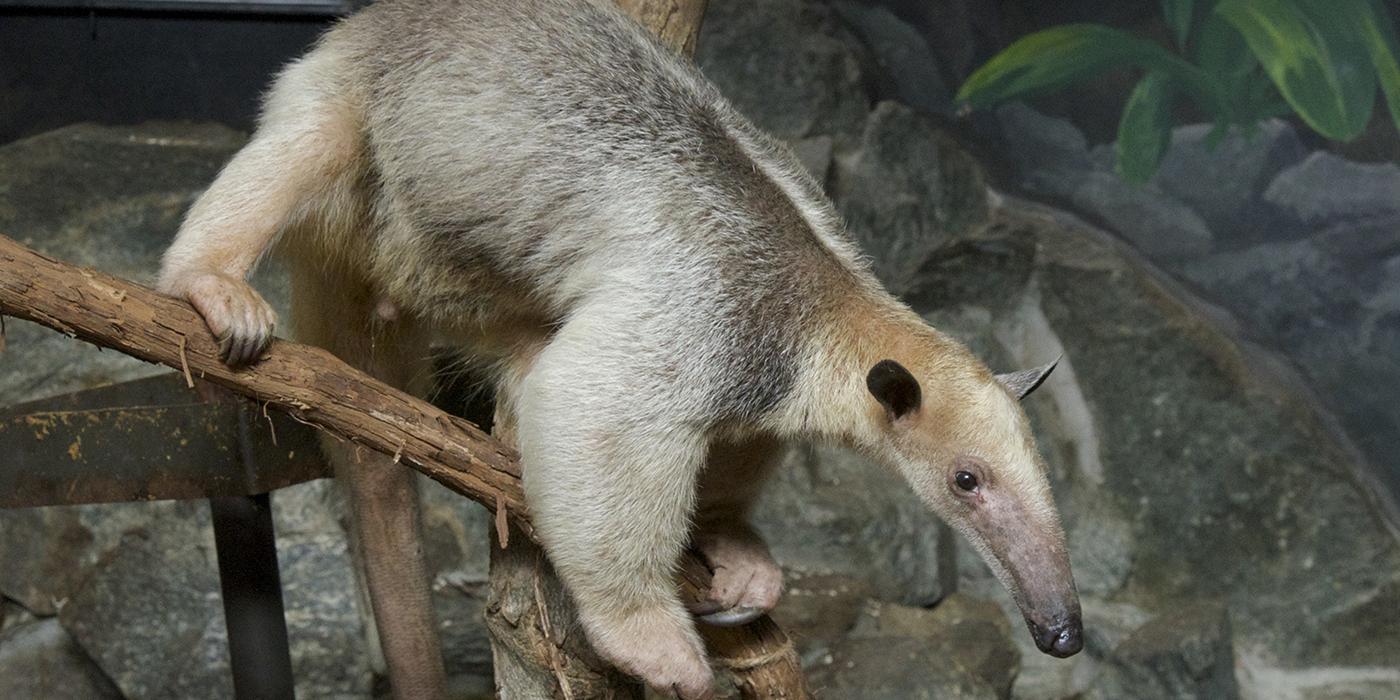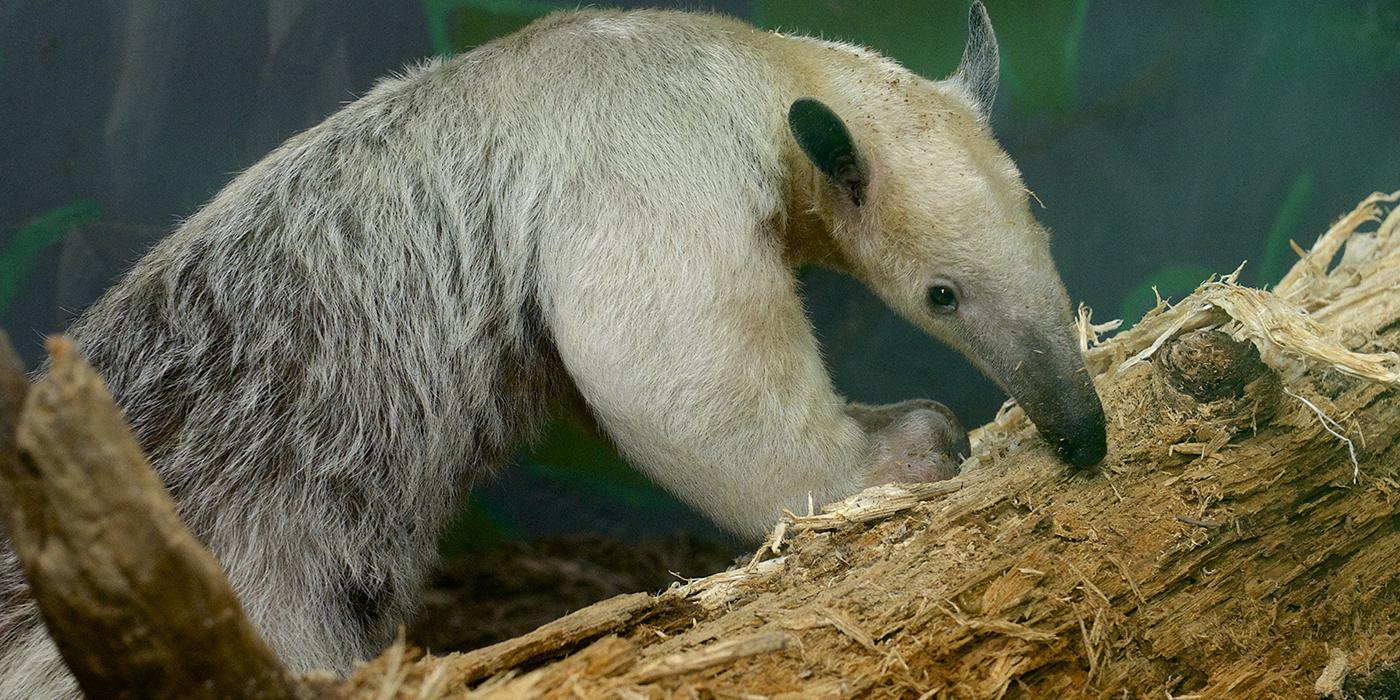Two Southern Tamanduas Die at Smithsonian’s National Zoo
In May, our Small Mammal House team said goodbye to two beloved tamanduas: Manny and Cayenne. Both surpassed the species’ median life expectancy of 9 years. At 19, Manny was the oldest tamandua in the Association of Zoos and Aquariums’ Species Survival Plan. His exhibit-mate and companion, Cayenne, was 10. They were humanely euthanized May 6 and May 15, respectively, following recent and irreversible declines in their health.
Smart and charismatic Manny was “easy to work with, eager to participate in his own care and loved by everyone who met him,” according to keepers. Over the past 9 months, our animal care team treated his age-induced diabetes with a novel daily oral medication (which he took happily with mealworms). He was trained to voluntarily participate in blood draws, which enabled them to track his blood sugar using a human glucose tracker.
Two weeks prior to his death, keepers noticed Manny’s movement had slowed, he drank large amounts of water and would not eat all of his diet, which was incredibly unusual for him. A veterinary exam and bloodwork revealed that his kidneys were failing, secondary to his diabetes. Despite further treatments, his condition continued to decline, though he was “still his friendly self.” Concerned that Manny’s pain was increasing, staff decided to humanely euthanize him.
July 14, 2020 | Tamandua Manny is woken up by his keepers with a mealworm breakfast.
Keeper Esther Wray fondly remembered Manny, saying “Typically, in the mornings he would be waiting at the exhibit door to greet us. Sometimes, we would find him sleeping in his favorite spot at the top of his exhibit. He would show off his long sticky tongue while he yawned and woke up. When we gave him complicated enrichment, like a papier mâché termite mound or boxes-in-boxes, he would show off his tearing and ripping adaptations and shred them apart in minutes.”
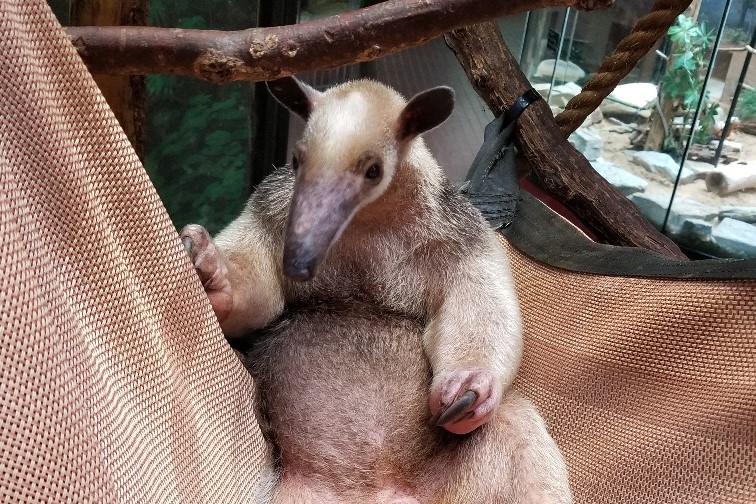
Southern tamandua Manny rests in a hammock.
An energetic “Hulk” of a tamandua, keepers describe Cayenne as “a super strong and bulky boy.” After he fell from the perching in his habitat in September 2023, he was diagnosed with hypertrophic cardiomyopathy, a condition where the muscles of the heart thicken, making it more difficult for the heart to effectively pump blood. Common complications include arrhythmia –an irregular heartbeat rhythm—and fainting spells.
This is the first time this condition has been seen in tamanduas. Zoo veterinarians worked closely with consulting veterinary cardiologists to treat Cayenne’s disease. He was the first tamandua to receive an insertable cardiac monitor (ICM), which enabled animal care staff to monitor his heart and make adjustments to his medications.
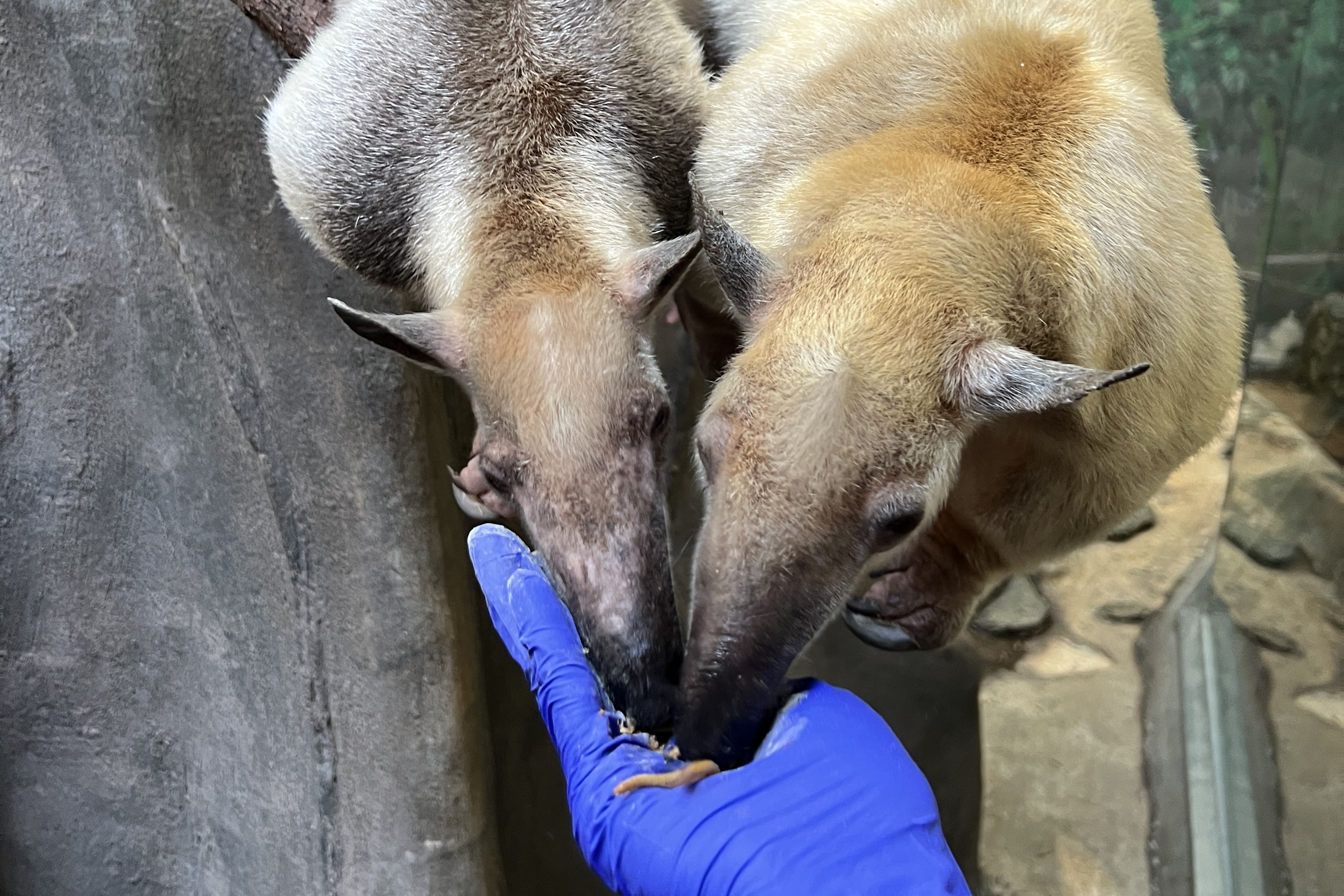
Southern tamanduas Manny and Cayenne eat meal worms out of their keeper's hand.
Although Cayenne had periods of stability, his cardiac events continued and worsened over time, weakening his heart, and staff made the difficult decision to euthanize him. They hope what they have learned from monitoring Cayenne’s cardiac events can help other tamanduas in future.
As the first tamanduas that some of the Small Mammal House keepers were fortunate to work with, Manny and Cayenne taught the team everything they knew about their species. Keepers say they will miss many moments with these tamanduas, especially their interactions with each other.
Manny and Cayenne wrestle on exhibit at the Small Mammal House.
“They had a unique relationship,” said Wray. “Manny and Cayenne went together like a tamandua peanut butter and jelly sandwich. Aside from breeding season, tamanduas are typically a solitary species. However, Manny and Cayenne lived together for many years until their individual health challenges required them to be housed separately. Often, keepers would watch them engage in wrestling matches or could find them cuddled up sleeping together in the branches of their exhibit.”
Manny and Cayenne were amazing ambassadors for their species and will be greatly missed by our Zoo community.
Tamanduas are no longer at the Zoo, but stop by the Small Mammal House to view amazing animals, including cotton-top tamarins and pygmy slow lorises.
Related Species:

